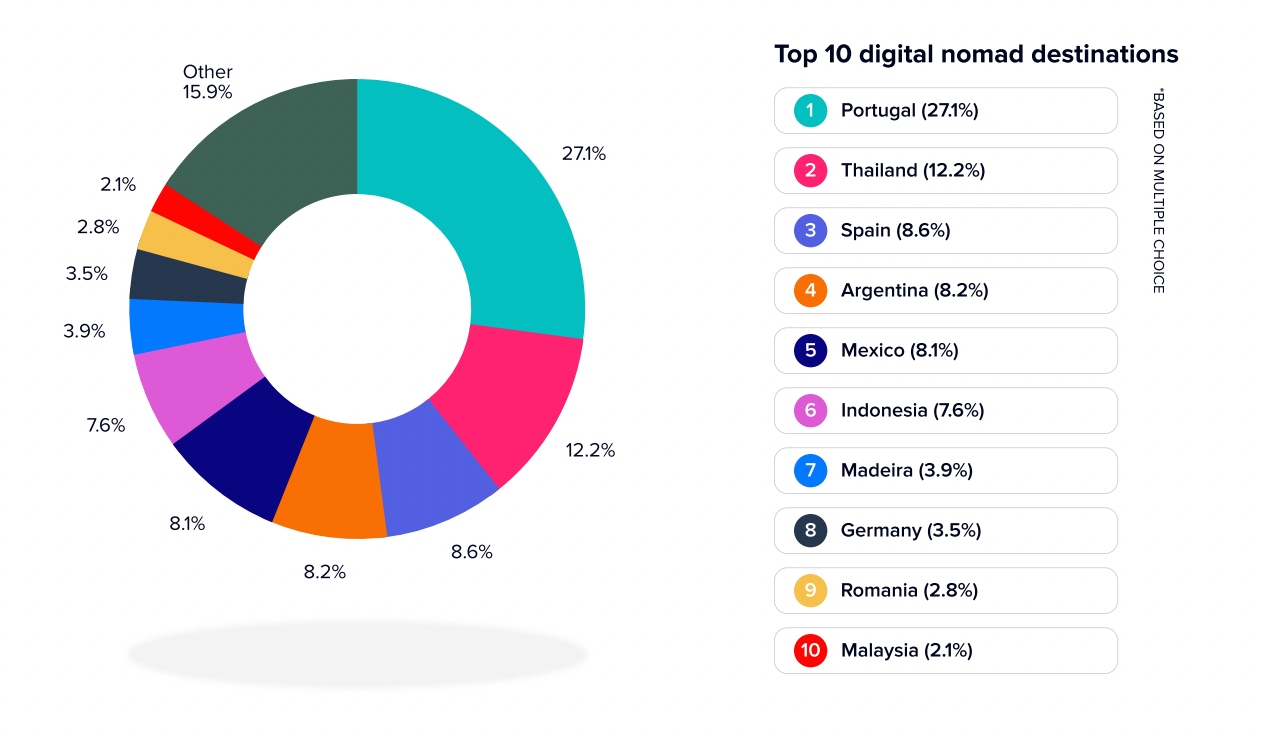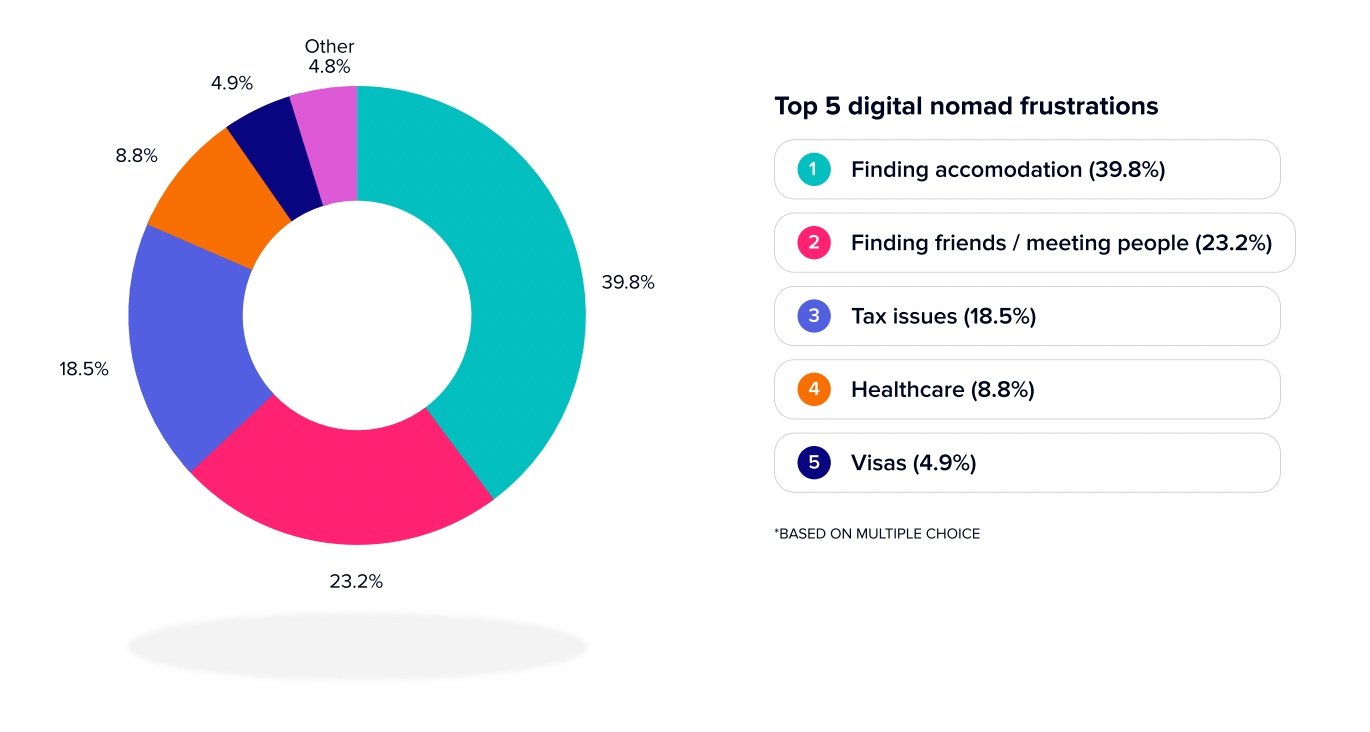
Laying in a hammock on a tropical island with a cold beverage in one hand while the other types leisurely away at a keyboard surely sounds like heaven. But what is the digital nomad life really like? And where are the best places to work remotely from?
Housing company Flatio asked 1,200 digital nomads of different ages, genders, and nationalities to find out their motivations, frustrations, and favourite destinations. Here’s a summary of the key takeaways.
Firstly, who are digital nomads?
Out of those surveyed, the greatest proportion were from the US (37%) followed by the UK (12%), and Germany (5%).
Just over half of the digital nomads are aged 30-39 and nearly 23% are between 18 and 29. Gender is reasonably balanced, with 55% male and 44% female. While 43.4% of digital nomads travel alone, the rest travel with partners, family, other nomads or friends.
Location, location, location
Unsurprisingly, digital nomads favour warm, relatively affordable countries to set up shop.
Over a quarter (27%) of respondents voted Portugal as their favourite destination. It stood far ahead of the other top European contenders — Spain (8.6%), Madeira (3.9%), Germany (3.5%), and Romania (2.8%).

Portugal is clearly an all-time favourite, but 14.5% of respondents voted Spain as the European destination they were most excited to visit next. It was followed closely by the remote archipelago of Madeira (13.3%).
Almost half (46%) voted cost as the number one factor determining their next destination of choice, followed by sunshine (15%), safety (12%), WiFi quality (9.4%), and good healthcare (6.1%).
How much are digital nomads earning?
The most common salary bracket of digital nomads was €41,000-50,000 (15.7%), followed by €31k-40k (14.5%). Only 8.8% of respondents earned more than €100k. This means the majority of respondents are earning above the national average wage of most of the countries they are living in.
As for how much you need to earn, just over 25% say that you require between €3,000 and €3,900 a month to be a digital nomad. Just over 20% opted for the €2,000 – €2,900 bracket, and 18% say digital nomads need to earn €4,000 – €4,900.
The majority (66%) of digital nomads surveyed say they pay taxes to their home country. Only 19.4% pay taxes to a different country, while 9% didn’t pay taxes at all.
Travellers woes
Living in exotic locations and making money while doing it might sound like a dream come true, but it’s not without its challenges.
The Flatio report found that digital nomads rank finding accommodation as the most frustrating part of the lifestyle. Airbnb remains the most popular booking platform (20.8%), followed closely by booking.com (17.4%), and Facebook groups (15.3%).
Private apartments and hotel rooms are the most common choice of accommodation followed by private rooms and hostels. A quarter of those surveyed spend €501 to €700 a month on rent and just under 20% spend €301 to €500.
Finding friends and meeting people came in second as the most difficult part of being a digital nomad. Tax issues, healthcare, and visas made up the rest of the top five frustrations.
Digital nomad visas
The survey group was split fairly evenly on the topic of digital nomad visas. Just over 46% say they use them while 44% don’t.
Over 60% think they are beneficial, while 15% think they need work, and 7% don’t think they’re useful at all.
When asked about Spain and Portugal’s digital nomad visas in particular, around 60% of those surveyed say they are beneficial.
For those looking for their next remote working destination, here are some other European countries offering digital nomad visas right now.








